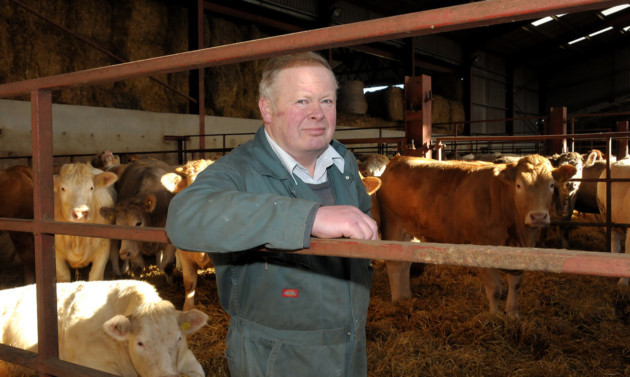Abattoir feedback is proving a very useful tool for Aberdeenshire farming family the Walkers, allowing them to tailor production to reflect what is required by the market.
Bruce Walker farms in partnership with his brother George, and their sons John and Keith are also in the business.
They finish around 1,400 head of cattle every year at Newton of Lewesk, Old Rayne, Inverurie, and have been involved in the North East Finishers Business Improvement Group (BIG) run by Quality Meat Scotland for two years.
The main enterprise at Newton of Lewesk is 1,000 acres of arable, consisting of winter wheat, spring and winter barley and oilseed rape.
However, there are around 250 acres of grass where 650 head of cattle are grazed in the summer months, followed by finishing lambs over the winter.
The grass is in a four-year rotation with plenty of clover included, and the aim is to graze 1,000kg per acre.
Mr Walker buys Charolais cross stores from January through to April, and the younger ones are turned out on to the grass for the summer.
Some are finished off grass, while the remainder (anything above 500kg liveweight in the spring) are finished inside on a total mixed ration of wheat straw, barley and pot ale syrup.
Autumn stores are purchased in September and October and finished inside.
Unusually, Mr Walker buys mostly heifers, with only about 150 steers included in the spring batch each year for grazing on some rented ground.
He said: “Heifers cost 10p per kg less to buy and finish quicker at an ideal weight.”
He aims for a 340kg carcase at 18 to 20 months of age, so the cattle are on the farm for an average of four months, gaining up to 1.6 to 1.7kg per day inside and 0.8kg at grass.
Finished heifers are sold to ABP, Perth, through the Castle of Mey scheme which offers about 6p per kg premium, but Mr Walker pointed out that the price has dropped from 420p per kg in November to 380p per kg now, which is just covering the cost of production.
The data available from the BIG shows that the Walkers’ enterprise is one of the top performers, with the diet costing 142p per kg of liveweight gain.
However, he has to blanket treat stores for IBR, fluke and worms.
This has led the group to believe better links with the store cattle breeders would be of benefit, but Bruce said that would be difficult in his case because he buys so many cattle from individual farmers.
He is looking forward to the introduction of electronic tagging for cattle which could provide this sort of information and potentially cut out any duplicate doses and save money.
Thanks to feedback from the abattoir and also through his own research, Mr Walker has discovered that he can make significant savings while improving liveweight gain and rumen health by reducing the cereal content in the ration for the newly arrived stores.
He said: “It is an advantage if the store breeders have introduced their cattle to cereals by the time I get them, but you don’t want them to be fed too much grain or it causes damage to the rumen and affects their growth rates.”
One aspect of finishing cattle which Mr Walker feels very strongly about is clipping pre-slaughter.
He sells all his cattle to ABP, Perth, which is the only abattoir in Scotland which clips them once they are dead.
He is always open to new ideas and enjoys the discussions and sharing of information generated by being part of the North East Finishers BIG.
One issue which has come up through discussion is dermatitis in the feet of the heifers, and a possible solution of including zinc in the diet to combat this. He intends putting this into practice on the next batch of heifers he buys in.
The North East Finishers BIG group has held joint meetings with two other North East BIG groups Upland and Huntly (predominately store producers) as well as retailers to explore opportunities for improving links in the chain.
Mr Walker has enjoyed seeing the industry from the processor’s point of view during the BIG meetings, particularly talks on how to make the most of the carcase.
“It is important this sort of information is passed down the chain because, as store producers and finishers, we need the processing industry to be strong, and we need to know how to supply them with the best product,” he said.
